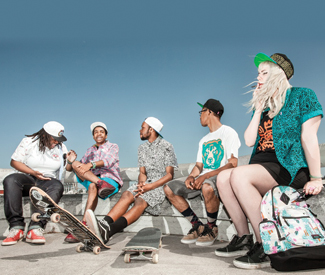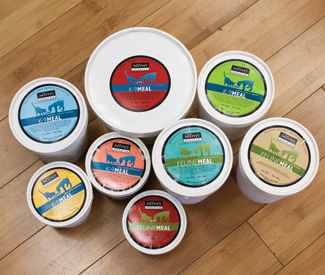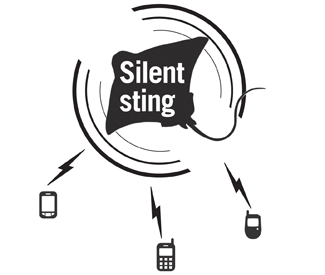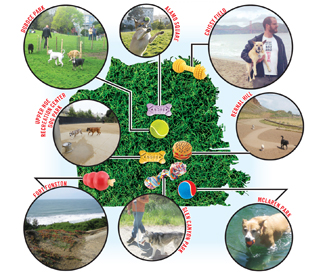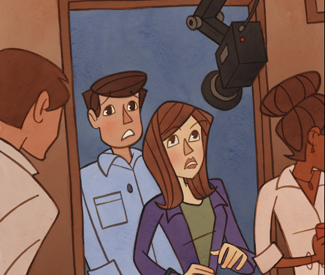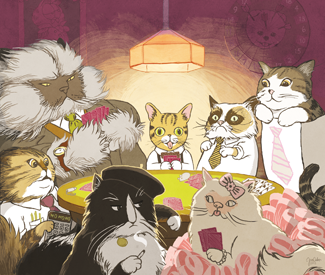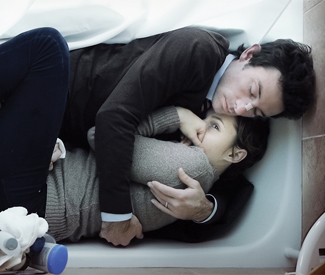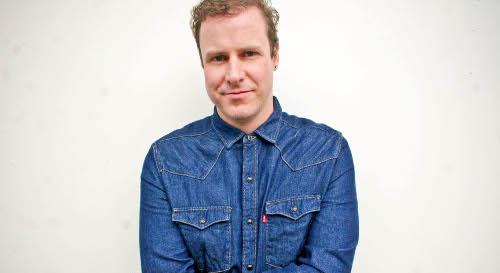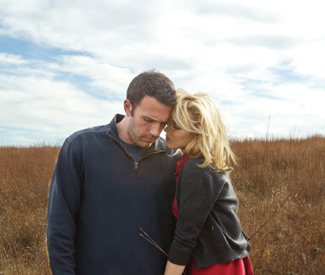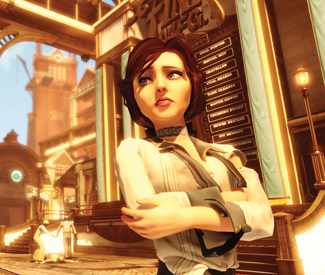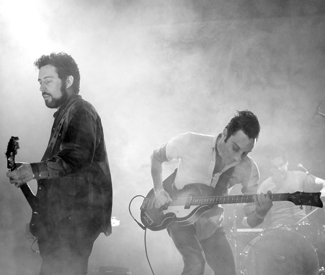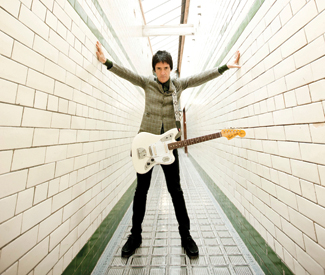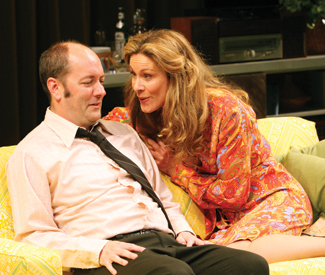caitlin@sfbg.com
PETS Lil Bub does not do corporate endorsements.
“I prefer going to my local pet store, so why would Bub endorse Petco?” says Mike Bridavsky, owner of the angel-faced, wide-eyed, underbite-blessed cat from Bloomington, Indiana who is one of the most prominent members of the Cat Pack, a term Bridavsky coins during our phone interview for the cadre of felines currently owning the Internet.
Who’s your favorite Internet cat? Surely you have one. Maybe it’s Maru, the Japanese Scottish fold with a panoply of oddly calming videos showcasing his cardboard box fixation.
At some point, surely, you’ve felt a kinship with that bubble-eyed scowlface Tardar Sauce, a.k.a. Tard, a.k.a. Grumpy Cat, a.k.a. 2012’s answer to the “Hang in there, baby!” poster cat.

If you’re into indie, you may hearing the meows from one of the lesser-known web celebs. Hermosillo, Mexico’s tutu-wearing Luna the Fashion Kitty, perhaps? Or Russia’s elusive Marquis of No No No Cat fame? Internet encyclopedia Knowyourmeme.com lists origin stories for 403 cat memes.
You’re under a rock with poor wifi coverage if you haven’t noticed: Though George Takei, gay marriage, and Jon Hamm’s penis are this moment’s runners-up to the throne, as the song goes, the Internet is made of cats. And some of those cats are making serious money.
Bridavsky rented out his recording studio as his primary source of income before photos of Lil Bub went viral and Vice shot the upcoming documentary based around his and Bub’s trip to the Internet Cat Video Festival in Minneapolis (a fest that is coming to Oakland May 11, more on that later.) He says he spends the long hours required to manage the career of a furry Internet luminary because of the sheer joy Lil Bub brings to the world.

“Bub’s always naked, she doesn’t wear stupid outfits.” Owner Mike Bridavsky tries to communicate his famous cat’s natural personality, unembellished. Photo by William Winchester Claytor
“People are like, ‘thank you for posting pictures of your cat, she gets me through my day,'” he says.
Located at the center of the hype storm as they are, the Cat Pack owners are hardly the ones to go to for explanations for why their beasts have become the Internet’s most important meme (sorry Beyonce.) Sure, they were the ones who posted the video or pics of their cat to the web initially — but most never expected to become part of a zeitgeist. ‘Net viralty is a mystery even to its anointed.
When Bub’s image started hitting aggregator sites like Buzzfeed and TheFW, “I was like, wow, she really has this effect on people,” Bridavsky says. It’s clear from speaking with him that he’s legitimately in awe of the little cat, who lives with dwarfism, bone disease that limits her mobility to an army crawl, “weird toes,” and no teeth.
“She’s had this effect on me since I got her, but I didn’t know it would transfer through photos on the Internet,” Bub’s owner opines. “She always looks like she’s in awe of what’s happening — like she’s from another planet and she’s seeing everything for the first time.”
Today, Lil Bub has more than 112,000 Facebook followers and an online store with totes, tanks, and mugs adorned with her furry face and protruding tongue. Despite her physical handicaps, she’s raised more than $30,000 for animal charities, according to Bridavsky. They only make public appearances at animal shelters or places sponsored by a shelter. Bub has been on Good Morning America, has an upcoming release being published by Penguin Books, and that Vice documentary debuts at the Tribeca Film Festival this month.
Unlike many of her Cat Pack cohorts, Bub’s character is unembellished by human touch. Bridavsky says he tries to make his own rules in his cat’s increasingly crazy fame funnel. “I’ve been sucked into this cat culture. But I feel like it’s a little more tastefully done with Bub. There’s no bad grammar, annoying fonts. Bub’s always naked, she doesn’t wear stupid outfits. It’s just about Bub, and being cool.”
All of Bub’s merch and production is done by his Bloomington artist friends, he says. “Everyone wants a piece of Bub, so I have a lot of muscle power. If Animal Planet wants a series on Bub [author’s note: this is a real thing], I can say yeah cool, but my friend is going to produce it.”
Yet Internet cats mean different things to different people.
CAT CULTURE
It is too early in the evening for people to be wearing animal suits, but there they are: two grown British men, astride a small stage at SoMa’s Butter nightclub at 7pm on a Wednesday. One poor, off-trend soul is wearing a bunny suit, but Chris “Meme Master Meow” Quigley sports a black-and-white Sylvester outfit to host “#kittencamp,” his traveling show from the UK that compiles the best Internet videos, for an open bar full of viral-loving tech heads. Sloshed attendees hold up “LOL” signs for the videos they like the most.
A bartender shakes his head at the geeky enthusiasm that suffuses the air. “I’m not sure what the hell is going on here,” he mutters, pouring another drink for a meme freak.
“#kittencamp” is not solely comprised of cat videos, but Quigley later explains to me in an email: “cats are the biggest meme on the Internet. The cat is essentially a device through which people communicate their emotions, creativity.” He owns two cat suits to reflect this fact.
There are various hypotheses for the popularity of Internet cats. British art philosopher and historian Michael Newall says cats look like human babies, inspiring adoration from us. But baby videos aren’t exactly popping off on Reddit.
The current crop of American celebri-cats is a reflection, not the origin point of our love of strange-looking kittens. Stephanie Karim, founder of Wonder Cat Rescue (www.wondercatrescue.org), says that “cats with cosmetics differences such as amputations, missing eyes, etc., have typically been easier to adopt out as long as there are no long-term medical needs.” She adds that the propensity to take home odd cats is more pronounced in San Francisco than the Central Valley, where Wonder Cat makes many of its rescues.
“Cats with the following conditions have always attracted attention and pulled at people’s heart strings,” writes one adoptions staff member from the San Francisco SPCA, before launching into a laundry list of conditions that include protruding tongues and cerebellar hypoplasia (a neurological condition that makes cats “wobbly.”)
Another popular thesis has to do more with cat people than the felines themselves. Issabella Shields Grantham is the executive director of the Great Wall of Oakland, the outdoor screening space destined to host the Internet Cat Video Festival when it comes to the Bay next month. The festival started last year at Minneapolis’ Walker Art Center, where 10,000 people amassed for the #catvidfest compilation of the Internet’s best cats. Grantham’s team expects 5,000 for the Oakland incarnation.
“One of the things we’ve found is that dog people get to walk their dogs, but cat people don’t really have a venue to celebrate their pets,” she tells me in a phone call. Grantham, whose interest in crowdsourced content for the Wall led her to #catvidfest, has seen the fest’s hype hit cat-focused eccentrics and Internet-focused hipsters alike. “This is about a desire that people have to hang out with other cat loves, celebrate cats, talk about cats.”
PRO CATS
One wonders how this grassroots desire for cat-person fraternization squares with the rising professional class of Internet meowmasters.
Maru, with help from his enigmatic owner known only as mugumogu, leads the pack with nearly 204 million Youtube views and an endorsement deal with Uniqlo. Grumpy Cat, the undisputed American queen of Internet cats, has appeared on Friskies commercials, buddied up with Anderson Cooper, and made a controversial appearance at this year’s South By Southwest, where the disgruntled, handicapped feline’s long hours of meeting-and-greeting in the Mashable-sponsored tent in the hot Austin climate led to the trending on Twitter of #freegrumpycat. (Maybe fear of hard questions was the reason why Tard’s owner Tabatha Bundesen didn’t respond to my pleas for an interview.)
“I find the idea of professionalizing memes quite odd — and it’s something that I’m kinda uncomfortable with,” writes Quigley. “Memes are a subculture thing and should live (or die) organically, powered by the will of the people online. As soon as you add in money, the value chain breaks.”
But regardless of what Quigley thinks, by and large the Internet cats are out to get big.
DO IT FOR THE EMOTICON
“He inspires something inside me,” says Anne Marie Avey of her famously eyebrowed rescue Persian who was left on the side of the road by his previous owner. The aspiring writer has crafted an Internet personality for Colonel Meow (Facebook fan count at time of press: 157,559; Twitter followers: 2,725; emoticon: ]:<), based around world domination, a love of scotch, and an antagonistic relationship with Avey’s golden retriever Boots.

Scotch, world domination, and foul hygiene mark Anne Marie Avey’s narration in her cat Colonel Meow’s various web endeavors. Photo by Eric Rosario
Avey started a Facebook page for Colonel Meow where she pairs photos of the cat with one-liners like “You may think I look cute … but I’m actually plotting the end of humanity.” The likes started rolling in during fall of last year and now Colonel Meow’s in a Virgin Atlantic TV spot with the Flaming Lips’ Wayne Coyle and yes, hobnobbing with Anderson Cooper (who apparently, Internet cats do it for.)
She knows not to push Colonel too hard — no sweaty Austin tents for this long hair. “He just went to Los Angeles County Museum of Art the other day and it was so much fun,” says Avey, who asserts that her star loves to walk on a leash and meet humans. “He loved it. But to do that every day … Is it hot out? He’s really furry. He’s going to be panting. There are conditions that you have to be aware of, because he is a cat.”
She’s also careful not to endorse certain pet brands. “I think it’s really important with all those recalls happening in the world to pay close attention to what your pet eats.” But ultimately, Colonel Meow’s fame is an important form of expression for Avey. She recently moved to Los Angeles with Colonel and her boyfriend to pursue her writing career.
Recently, she augmented the Colonel Meow brand with a celebrity news website (www.colonel-meow.com) — well, kind of. Items are limited to a photo and a pithy comment from the Colonel. Sample post: “Roger Ebert dies. But his horrible review of Scrooged lives on. Really, Roger? One star? It’s so entertaining! R.I.P.”
LUNA LAND
Rocio Grijalva isn’t going to lie — the seven hours (by her estimate) she spends each week on the Internet hyping her cross-eyed Persian Luna translate to kitty kibble in the bank.

Luna the Fashion Kitty (shown here in front of her closet)’s owner Rocio Grijalva uses her cat’s fame to raise awareness about rescue Persians. Photo by Rocio Grijalva
“Luna came into my life when she was 2.5 months old, because a mouse broke into my house,” she wrote me in an email. “Long story short, I don’t let Luna hunt mice, she only hunts for sales.” Nowadays, Facebook gives LunAddicts the daily chance to see the kitty’s new hairbows and fur friends — real Persians cats in shelters who need to be adopted.
“My goal is to raise awareness towards Persian cats,” writes Grijalva. “Persians are being mistreated, and end up in shelters or in the streets. The survival rate for a Persian in the wild is very low, since they need a lot of maintenance.”
At a little over 15,000 likes, Luna has her own calendar, but she’s not yet on the level of say, Grumpy Cat. Nonetheless, “Luna gets a lot of fan mail with all kind of presents, from dresses to food,” writes Grijalva. “I don’t remember the last time I bought treats for her. Luna’s fans are more than generous and we are forever thankful to each one of them.”
KITTY LOVE GOES IRL
Consider this the moment in recent history to be a proud crazy cat lady, regardless of one’s gender. Events like “#kittencamp” and the Internet Cat Video Festival, which will make a tour of 10 US cities this year, are proliferating, leaving feline fanatics with evermore options beyond the headphones and computer necessary for a “squeeeee!” search.
The trend is exciting in light of the fact that many traits that have been associated (through a 2010 University of Texas at Austin study, y’all) with cat people may also pre-program them to spend mega-hours in the blue robot light of the computer. Those who lean feline tend to be more introverted, neurotic, yet more open to new experiences than dog lovers.
For further proof that cat culture is expanding past the computer screen, one need only listen to the festival lineup that Grantham has planned for May 11 at her Oakland manifestation of catdom.

The first incarnation of the Internet Cat Video Festival was in Minneapolis in 2012 (shown above). It attracted 10,000 attendees.
#catvidfest will be screened on the vast Great Wall of course, but the day’s other offerings include an aerial “kitten duet” performance by dance troupe Bandiloop, an appearance by Klepto Cat (the San Mateo kitty famed for compulsive burglarizing of the neighbors), cat arts and crafts, seven local animal shelters offering on-site adoptions, Pet Food Express’ foster kitten program, and two separate areas for feline-related vendors (one is specifically for local enterprise, like Unido, an Oakland company that makes cat-patterned infinity scarves.) The entire event is a benefit for the East Bay SPCA.
“Watching Youtube videos is usually a very personal experience,” writes Quigley. “So as soon as you watch them in a public context, it changes things.”
For Grantham, it really is more about the watchers rather than the watched. She’ll be peeping you more than Bub’s angelic visage rendered large on the downtown Oakland wall: “To me, it’ll be more fun watching the audience than watching the cat videos.”
OAKLAND INTERNET CAT VIDEO FESTIVAL
May 11, 3-10pm, $10
Great Wall of Oakland
Broadway and W. Grand, Oakl.
www.oaklandcatvidfest.com
CORRECTION: In the print version of this story, Grumpy Cat is referred to as “the undisputed American king of Internet cats.” Tardar Sauce, a.k.a. Grumpy Cat is, of course, a girl. The Guardian regrets the error.







